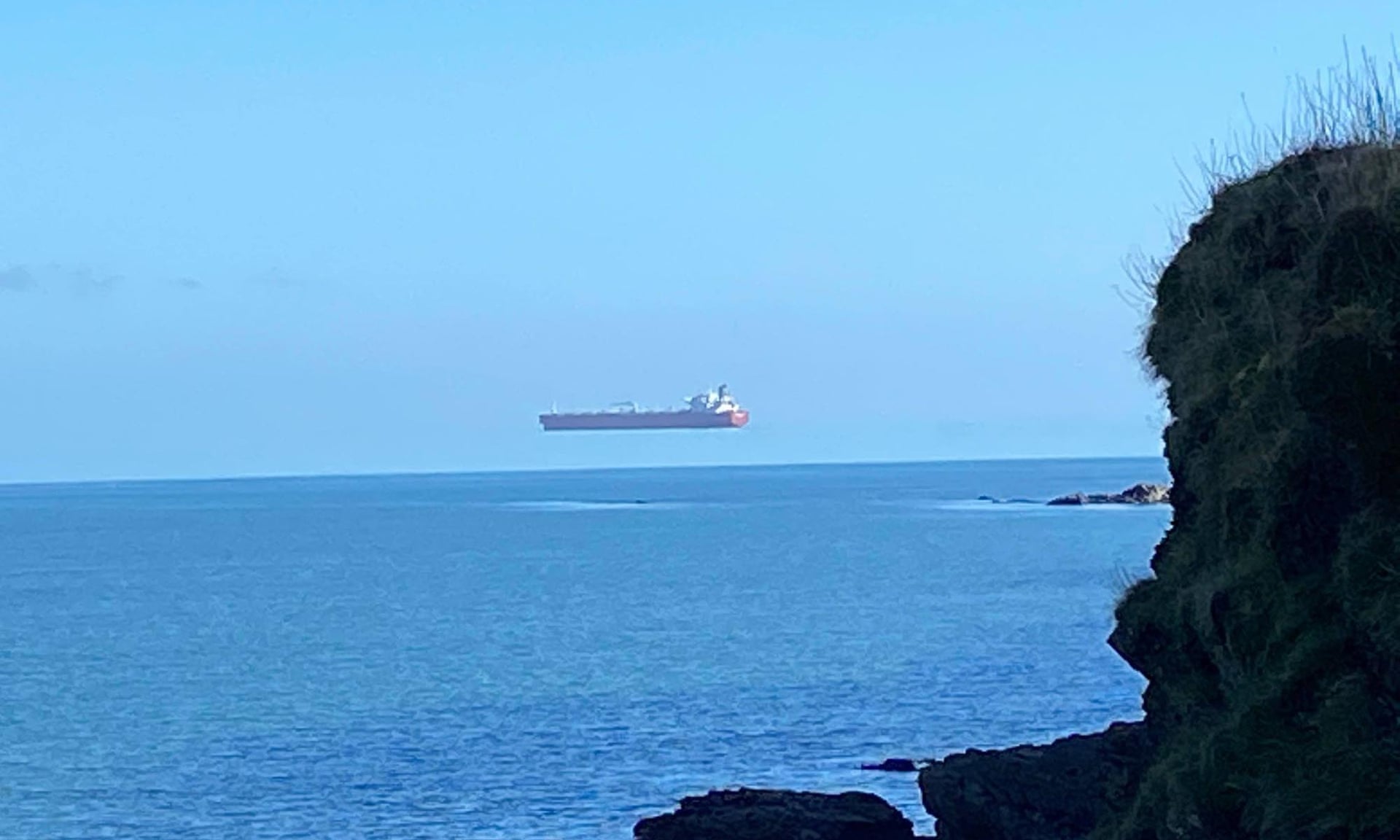 An earthquake off the coast of Humboldt County triggered a tsunami warning and evacuations along the East Bay shoreline Thursday morning. The warning was later called off, and the bay waters remained calm. Credit: Phil Rowntree Credit: Phil Rowntree
An earthquake off the coast of Humboldt County triggered a tsunami warning and evacuations along the East Bay shoreline Thursday morning. The warning was later called off, and the bay waters remained calm. Credit: Phil Rowntree Credit: Phil RowntreeIn ordering evacuations around its entire waterfront following a tsunami warning Thursday, Berkeley appears to be in the minority among East Bay cities. But it’s unclear as to whether that’s because Berkeley acted more cautiously than its neighbors, or more nimbly.
According to AC Alerts, a disaster warning system for Alameda County, Berkeley and Albany were the only cities that called for evacuations in their waterfront neighborhoods. Emeryville officials posted on social media that evacuation of low-lying areas was “optional.” In San Francisco, where tsunamis hit harder than the inner Bay, no evacuations were ordered, the San Francisco Chronicle reported, though people were asked to move a block away from the water.
The evacuation ended up being cancelled after about 40 minutes, when geologists and weather experts determined that the 7.0-magnitude earthquake that first sparked fears of a tsunami was not the type that typically generates them.
But in Berkeley, “pre-existing state guidance indicated that such a tsunami could reach as far east as portions of Seventh Street,” Matthai Chakko, a spokesperson for the city, wrote in an email, referring to the California Geological Survey’s projections of how tsunamis would affect California.
 The areas in red indicate sections of Berkeley that BPD said should evacuate Dec. 5, 2024. Credit: Genasys Project
The areas in red indicate sections of Berkeley that BPD said should evacuate Dec. 5, 2024. Credit: Genasys ProjectGeologists and the National Weather Service issue tsunami warnings anytime there is an earthquake that reaches 7.0 or higher, since tsunamis travel hundreds of miles an hour and can push swells more than a story high onland.
Berkeley’s better-safe-than-sorry approach to tsunami danger has a parallel in its approach to wildfires. Unlike neighboring cities, Berkeley strongly urges residents to preemptively evacuate their homes before a fire starts when weather conditions are especially risky.
On Thursday Berkeley activated its Emergency Operations Center, which the city uses to centralize and streamline emergency response communications, as soon as the tsunami warning went out to residents’ cell phones at 10:49 a.m., Chakko wrote in an email Thursday night. While Berkeley sent out a survey seeking feedback on its response, Chakko said Friday that the results were not yet available.
“City staff updated our emergency map by 11:14 am., issued an AC Alert by 11:20 a.m. and used berkeleyca.gov and the city’s social media accounts on X and BlueSky to amplify the message,” Chakko wrote. “The city’s outdoor warning system broadcast its first warnings at 11:16 a.m.”
While city staff were sending alerts, “approximately two dozen Berkeley police officers, roughly 15 fire department staff, communications staff and all marina staff mobilized to evacuate all waterfront residents, visitors and workers,” Chakko said. The Berkeley Marina was vacant by 11:45 a.m., he said. “Staff also checked for people at Tom Bates Field, in RVs along Frontage Road near Ashby Avenue and McLaughlin Eastshore State Park.”
California Highway Patrol officers shut down off-ramps from Interstate 80 onto Gilman Street and University and Ashby avenues, Chakko said.
“Thankfully the tsunami did not materialize. If it had, as we were warned it would, the danger to people and damage to structures would have been significant,” City Manager Paul Buddenhagen wrote in a prepared statement. “I am deeply grateful to the incredibly swift, careful and decisive work of our Emergency Operations Center staff, with special appreciation for Fire, Police, Parks and Recreation, and Communications employees who worked together to protect our community.”
Different threats from different fault lines
The NWS has three different levels of alerts for tsunamis — watches, advisories and warnings. Warnings, like the one issued Thursday, indicate the highest level of risk, with a predicted water level rise over 3 feet. Thursday’s warning “was the first time that this level has been used in Berkeley in recent history,” Chakko said.
The 8.9-magnitude earthquake that struck Japan in 2011 touched off a tsunami surge that hit the Berkeley Marina, thrashing boats and docks. In 2022 an underwater volcano near Tonga prompted a tsunami advisory and an evacuation at the Berkeley Marina and surrounding area; alerts from the Berkeley Fire Department and UC Berkeley initially described the advisory erroneously as a warning.
 On Jan. 15, 2022, seawater from a tsunami surged into the Berkeley Marina following an underwater volcano eruption in Tonga. Credit: Jacqueline Bott, California Geological Survey
On Jan. 15, 2022, seawater from a tsunami surged into the Berkeley Marina following an underwater volcano eruption in Tonga. Credit: Jacqueline Bott, California Geological SurveyAlerts for tsunamis are infrequent. But on average, California experiences an alert that requires some sort of response about once every two years, geologists have previously told Berkeleyside.
After an earthquake of 7.0 magnitude or higher, scientists at the National Tsunami Warning Center first issue a warning and quickly start analyzing data from offshore gauges and sensors, running forecast models to predict when hazardous waves could reach the shore. (Tsunamis travel at roughly the speed of an airplane.) If it’s deemed not dangerous, the warning is lifted.
“We have to issue warnings based on earthquake magnitudes because we do not know what has happened on the seafloor for sometimes an hour or longer afterwards,” Jeremy Lancaseter, the director of the California Geological Survey, said in a video statement released Friday afternoon.
Thursday’s tsunami, if it had occurred, was estimated to have hit Berkeley around 12:10 p.m., according to the city, a little more than an hour before the afternoon high tide.
There are a number of different areas, or “subduction zones,” where earthquakes generated by tectonic shifts might touch off tsunamis that could theoretically reach the East Bay. These are spots where one plate drives under another, compared to slip-strike faults, where plates slide past each other.
Because Thursday’s earthquake was caused by a strike-slip movement, the crust on the seafloor did not move enough to displace water and cause a tsunami that would reach the coastline, Lancaster said.
“Tsunamis originating in Asia can take 12 hours to cross the ocean. By contrast, the close proximity of the earthquake’s location triggered conditions for particularly quick arrival of a potential tsunami to the Bay Area,” Chakko said. That means less time to crunch data and make a decision before making a decision about whether to order an evacuation.
The California Geological Survey has projected that the biggest tsunami threat to coastal California would begin with a high-magnitude earthquake near Alaska’s Aleutian Islands. It’s what’s typically called a “1,000-year event,” or the worst-case scenario going back a millennium in a given location.
“Though this is a worst-case type of event, if it were to occur, we could see flooding up to a 10- to 15-foot elevation in the Berkeley area,” Rick Wilson, a senior engineering geologist at the California Geological Survey, told Berkeleyside in 2022.
Tsunamis typically travel about 500 mph, Wilson said at the time. They slow down when they reach shallow water, but at that point their energy is forced upward, generating larger waves.
Berkeley sent out a survey via AC Alerts Thursday asking for feedback on its response to the warning. Information on that feedback was not immediately available.
State’s emergency services department backs up local officials in making their own call on evacuation
The California Office of Emergency Services functions as a command center, coordinating major emergencies to state and local responders. Once the tsunami warning was issued on Thursday, it activated its state operations center.
“Hundreds of employees” were mobilized Thursday, said Amy Palmer, a spokesperson for the office.
Local officials are given the discretion to issue an evacuation notice or warning for their own community because they are most familiar with the conditions on the ground, she said.
“Alerts are a game-changer during emergencies and disasters — they can save people’s lives with information when it comes to evacuating from a fire or learning about a weather pattern that could be deadly…or earthquake information,” she said.
Asked if there were concerns about residents becoming desensitized to warnings when dangers don’t materialize, Palmer said the solution lies in education. “The challenge of emergency communications always is to give people precisely the information that they need in the moment to take the correct action for them,” she said.
The sharp buzzing you likely heard on your phone — a Wireless Emergency Alert, or WEA — wasn’t sent out by Cal OES — that was a decision made by the U.S. Tsunami Warning Center. The WEA system does not know your location or phone number — it uses cell phone towers to send messages to all devices in a given range.
"*" indicates required fields
Send a private note to the editors.*
See an error that needs correcting? Have a tip, question or suggestion? Drop us a line.


















 English (United States) ·
English (United States) ·